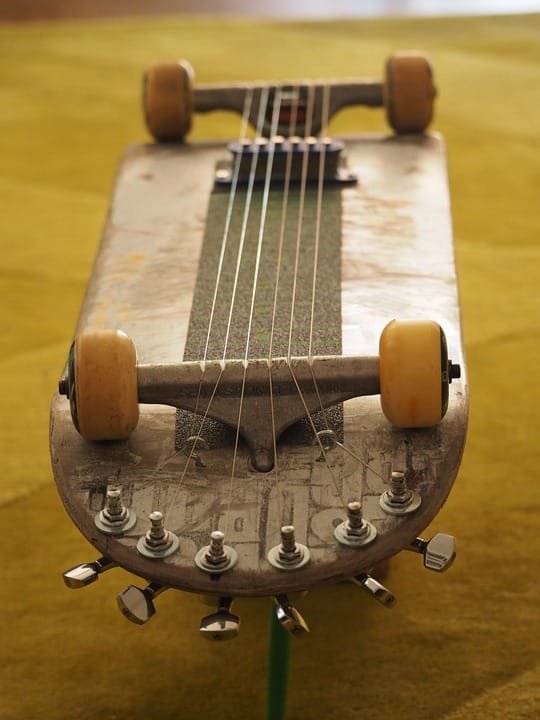Turn an Old Sweater into a Trendy Hat in Just a Few Easy Steps: A Journey into Sustainable Fashion
As I bundled up on a chilly winter morning, I couldn’t help but think about the environmental impact of my wardrobe choices. The fast fashion industry, which accounts for 12.8% of global greenhouse gas emissions, is a significant contributor to climate change (1). The thought of contributing to this problem made me want to rethink my relationship with clothing. That’s when I discovered the world of sustainable fashion.
The Power of Sustainable Fashion
Sustainable fashion is not just a trend; it’s a commitment to conscious living and self-expression. By adopting eco-friendly practices, we can reduce waste, conserve resources, and promote fair labor practices. The benefits of sustainable fashion are numerous:
- Eco-friendly materials: Opt for natural fibers like cotton, hemp, and bamboo, which require less water and pesticides than synthetic materials.
- Slow fashion: Focus on quality over quantity, investing in timeless pieces that won’t end up in landfills.
- Upcycling: Give new life to old clothes by transforming them into something new and unique.
The Impact of Fast Fashion
Fast fashion has a devastating impact on the environment and society:
- Waste: The average American generates 82 pounds of textile waste per year, with only 15% being recycled (2).
- Water pollution: The production of synthetic fibers like polyester and nylon requires massive amounts of water, leading to water pollution and depletion.
- Labor exploitation: Many fast fashion brands prioritize profits over fair labor practices, leading to poor working conditions and low wages.
The Benefits of Upcycling
Upcycling is a creative way to reduce waste and promote sustainability. By transforming old clothes into new items, we can:
- Reduce waste: Give new life to old clothes, reducing the amount of waste sent to landfills.
- Conserve resources: Reuse materials instead of extracting new ones, conserving natural resources.
- Promote creativity: Upcycling encourages creativity and self-expression, allowing us to create unique pieces that reflect our personal style.
Transforming an Old Sweater into a Trendy Hat
Now, let’s get creative! With just a few easy steps, you can turn an old sweater into a trendy hat:
- Gather materials: Collect an old sweater, scissors, a hot glue gun, and a ribbon or elastic.
- Cut out the sweater: Cut out the front and back of the sweater, leaving a 1-inch margin around the edges.
- Shape the hat: Use the scissors to shape the sweater into a hat, folding the edges inward to create a seamless seam.
- Glue the edges: Apply hot glue to the edges and attach the ribbon or elastic to create a secure fit.
- Add embellishments: Add any embellishments you like, such as buttons, appliques, or embroidery.
Tips for Consumers
To make sustainable choices, follow these tips:
- Buy second-hand: Thrift shopping is a great way to find unique pieces while reducing waste.
- Invest in quality: Focus on timeless pieces that won’t need to be replaced frequently.
- Care for your clothes: Wash clothes in cold water, avoid dry cleaning, and mend tears to extend their life.
Conclusion
Sustainable fashion is not just a trend; it’s a commitment to conscious living and self-expression. By adopting eco-friendly practices, we can reduce waste, conserve resources, and promote fair labor practices. Upcycling is a creative way to reduce waste and promote sustainability, and with these simple steps, you can transform an old sweater into a trendy hat.
Frequently Asked Questions
Q: What are some eco-friendly materials I can use for my wardrobe?
A: Look for natural fibers like cotton, hemp, and bamboo, which require less water and pesticides than synthetic materials.
Q: How can I reduce waste in my wardrobe?
A: Start by buying second-hand, investing in quality pieces, and caring for your clothes to extend their life.
Q: What are some sustainable fashion brands I can support?
A: Research brands like Patagonia, Reformation, and Everlane, which prioritize sustainability and transparency in their production processes.
References:
(1) Ellen MacArthur Foundation. (2017). A New Textiles Economy: Redesigning Fashion’s Future.
(2) United States Environmental Protection Agency. (2020). Sustainable Materials Management: 2019 Data Highlights.
Visual Content
[Image: A person wearing a trendy hat made from an old sweater, with a cityscape in the background] [Infographic: A flowchart illustrating the benefits of sustainable fashion, including reduced waste, conserved resources, and fair labor practices] [Video: A tutorial on upcycling an old sweater into a trendy hat, with close-ups of the materials and steps]SEO Structure
H1: Turn an Old Sweater into a Trendy Hat in Just a Few Easy Steps: A Journey into Sustainable Fashion
H2: The Power of Sustainable Fashion
H3: The Impact of Fast Fashion
H4: The Benefits of Upcycling
H4: Transforming an Old Sweater into a Trendy Hat
H4: Tips for Consumers
H4: Conclusion
H4: Frequently Asked Questions








Leave a Reply